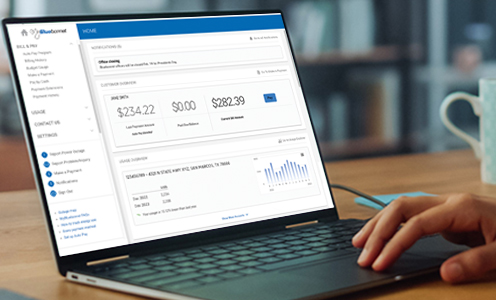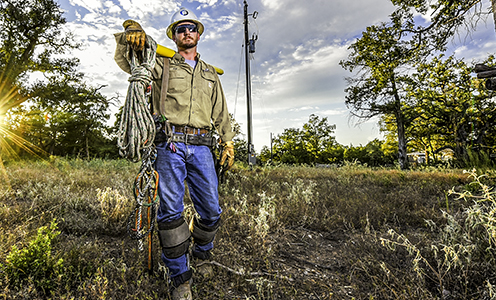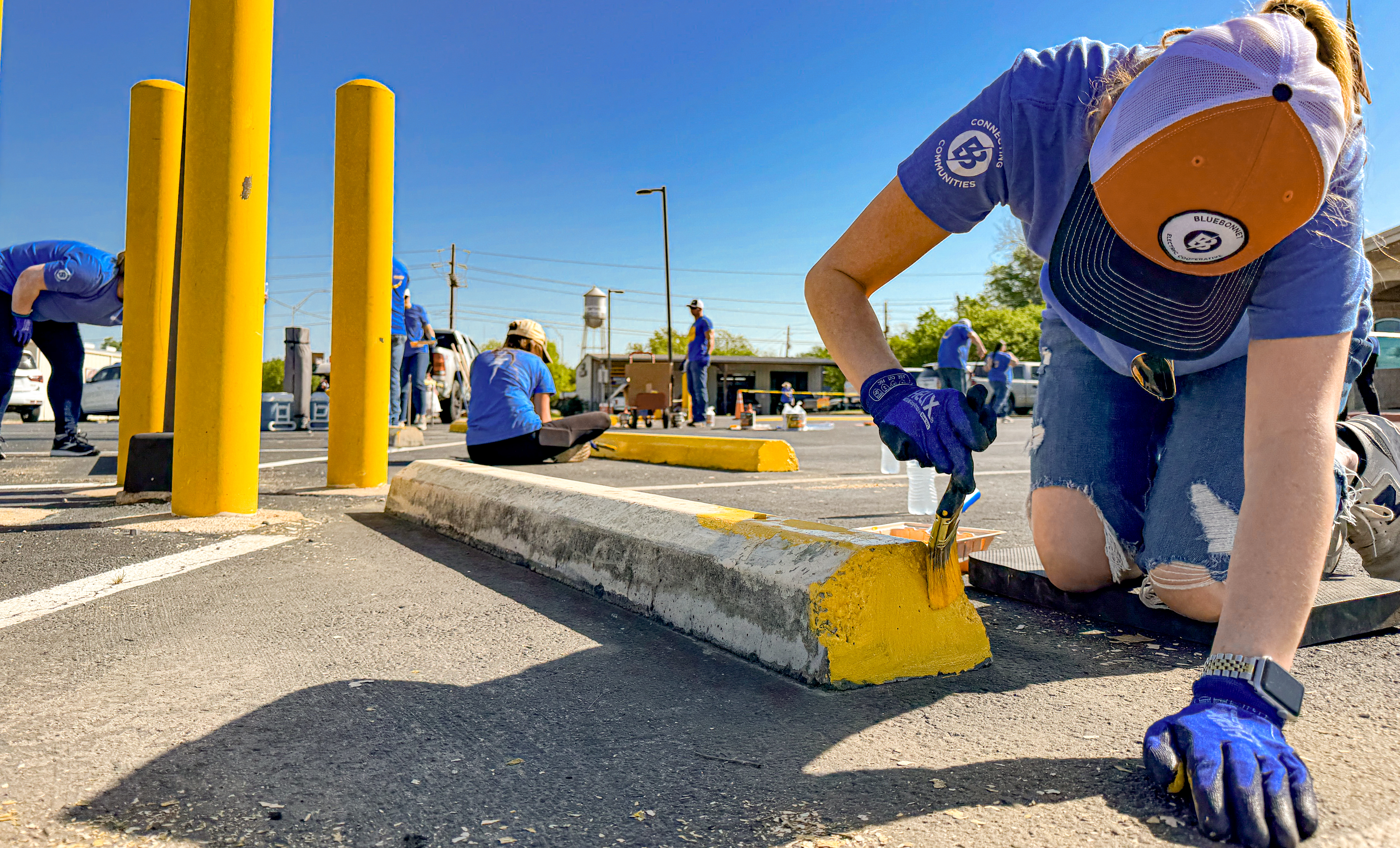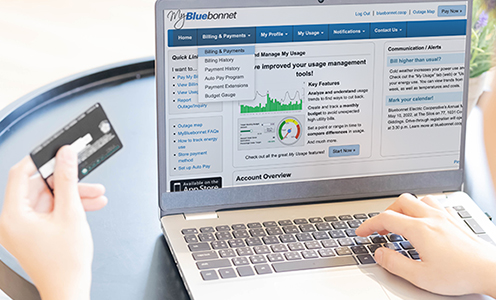Bluebonnet can extend existing primary-line facilities (power lines at 7,200 volts or more) to the overhead transformer that will service a new location. Typically, there is a contribution-in-aid-of-construction (CIAC) fee associated with such a line extension.
The contribution-in-aid-of-construction, or CIAC, is a fee paid by the applicant to help cover the costs of extending electric lines. The CIAC is non-refundable and must be paid before construction begins.
The CIAC Refund Policy applies to members receiving new overhead permanent residential service only. Applicants who incur a total Contribution‐In‐Aid of Construction (CIAC) exceeding $10,000.00 if built after July 23, 2023 are eligible for a one‐time CIAC refund. Refunds will be provided at 30% of the total CIAC if another member builds on to this new extension within 3 years of the date construction was completed. The member must notify Bluebonnet within 60 days of construction of the additional extension.
CIAC Refund Form (built after July 2023)
Español
The CIAC Refund Policy applies to members receiving new overhead permanent residential service only. Applicants who incur a total Contribution‐In‐Aid of Construction (CIAC) exceeding $7,000.00 if built before July 23, 2023 are eligible for a one‐time CIAC refund. Refunds will be provided at 30% of the total CIAC if another member builds on to this new extension within 3 years of the date construction was completed. The member must notify Bluebonnet within 60 days of construction of the additional extension.
Applicant pays a non-refundable contribution-in-aid-of-construction fee for all estimated line extension costs that exceed $350 per service.
Applicant pays a non-refundable contribution-in-aid-of-construction fee for all estimated line extension costs that exceed $1,950 per service.
Applicant pays a non-refundable contribution-in-aid-of-construction fee for all estimated line extension costs that exceed the calculated construction allowance for each individual new service. The calculated construction allowance shall be determined on a case-by-case basis based on the applicant's projected energy use patterns and expected length of membership, not to exceed 30 years.
Any developer subdividing a tract of land on which the majority of lots are 10 acres or less is required to pay, in advance, a nonrefundable CIAC fee for all estimated line extension costs that exceed $1,950 per service.
Applicants who request temporary electric service (generally 24 months or less) are required to pay a non-refundable contribution-in-aid-of-construction fee for all line extension and removal costs to serve a specific location.
Applicants for electric service in dually certificated service territory — an area designated by the Public Utility Commission where residents or businesses have more than one choice for their electric provider — will typically pay a non-refundable contribution-in-aid-of-construction fee consistent with the policies for their specific rate class. However, at Bluebonnet's discretion, an applicant's contribution may be determined by the more precise construction allocation calculations that are used for Pumping, Three-Phase Commercial and Large Power Service. (see above)
Service to motor loads greater than 25 horsepower, whether service is to an individual motor, several motors, or motors and non-motor load, are subject to approval by Bluebonnet’s Engineering Department and will require applicants to pay line extension fees consistent with the policy for Pumping, Three-Phase Commercial and Large Power Services (see above).
Applicants shall pay a non-refundable contribution-in-aid-of-construction fee for all costs associated with facility relocations.
This is done at the sole option and discretion of Bluebonnet.
Bluebonnet has complete ownership and control of all electric equipment and facilities, and can serve others from any line or any extension without refunding to a member or members any part of payments made or crediting any bill.
An easement is a written document signed by the landowner, which grants Bluebonnet permission to access and use a portion of the landowner’s property to construct, maintain, operate, repair, replace, relocate and remove any of the necessary components for supplying electricity to its members. The easement must be signed by the landowner or the landowner’s authorized representative before a notary public
Members must give Bluebonnet the rights, privileges and easements necessary to construct, operate, repair, replace and perpetually maintain electric equipment and facilities located on the member’s owned or leased property, and in or on all streets, roads or highways abutting their property. All service lines providing members with electricity and all switches, meters and other appliances and equipment constructed or installed by Bluebonnet on the property belong solely to Bluebonnet, and Bluebonnet can access the property to repair or service those items and, upon discontinuation of service, to remove them.
Easement Form
Español




